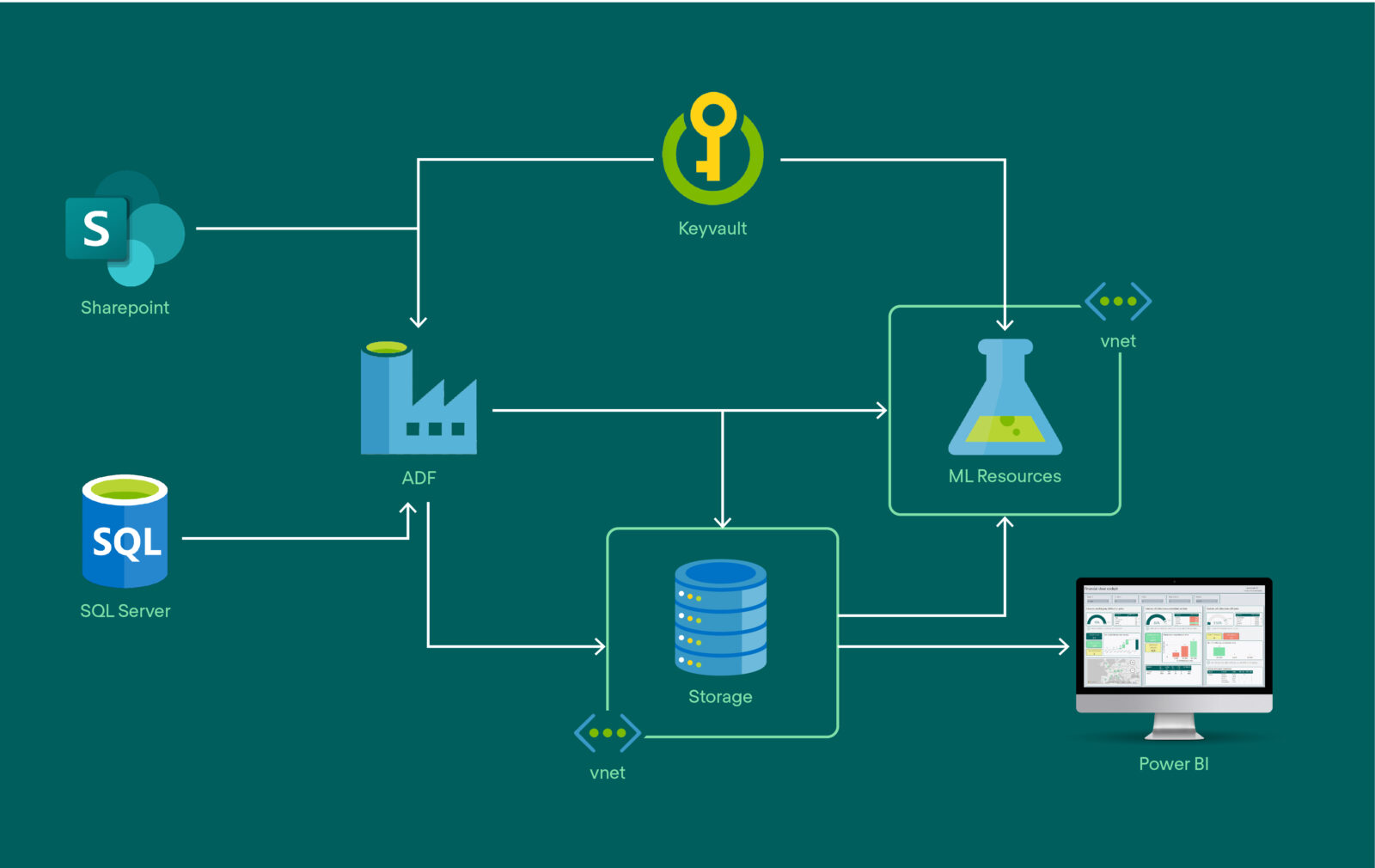
Service: Artificial Intelligence

Industry: Pharma

Department: Global Business Services

Size: 15.000+ employees in over 40 countries

Revenue: 5+ bn CHF (2020)

Service: Artificial Intelligence

Industry: Pharma

Department: Global Business Services

Size: 15.000+ employees in over 40 countries

Revenue: 5+ bn CHF (2020)
We designed a customized machine learning model for a predictive AI solution for a multinational biotech company. Also, we created an analytics infrastructure to address our client’s specific needs. We guided our client throughout the entire systems development lifecycle: from ideation to deployment and maintenance.

Our client is a large multinational biotech company. They generated CHF 2.5 billion in sales in the first half of 2021 and were looking to deploy an AI predictive solution that optimized its accounts receivable (A/R) collection.
At Sereviso, we assessed the pros and cons of cloud, on-premise, and hybrid solutions. Our conclusion was that the Cloud was the best environment to put this AI solution into production. This setup came with numerous advantages. Some were for instance a better performance, easier maintenance of ML applications, lower setup costs, and future scalability.
Microsoft Azure, Google Cloud Platform, and Amazon Web Services (AWS) are the leading cloud providers. Our client already used other services from the Microsoft environment. This is why Azure fit well into the picture. It is positioned at the forefront of IaaS and PaaS, and makes rapid deployments possible.
In this case, the key sensitive points for success were the technical performance, reliability, platform security, as well as the scalability.
Sereviso leveraged multiple Azure services to develop a robust, streamlined, efficient, and scalable solution. We utilized five key Azure services in the deployment of our client’s predictive AI solution.
At the center of our AI solution lies the Azure Machine Learning service. This service empowers data scientists and developers to build, deploy, and manage high-quality models. In short, AML supports the end-to-end machine learning cycle.
This service hosted three mission-critical activities:
Azure Data Lake is a scalable data storage and analytics service. ADLS Gen2 converges the worlds of object storage and hierarchical file storage. It has performance and security advantages for analytical workloads.
We created a multi-layered storage to ensure that users could access relevant data and maximize platform value. Our goal was to preserve data integrity and prevent unnecessary access to highly-sensitive information. Therefore, we divided the data into three zones.
One zone was for uploading external data from multiple data source systems including SAP, SAP BW, SharePoint, and internal SQL servers. A second zone contained preprocessed data organized in line with the ideal operational structure. Access to this zone was restricted to ensure data integrity. Furthermore, the third zone contained processed data used to generate reports. From here, data scientists could also access the output from ML models.
This service is used for creating data pipelines and integrating data between various sources.
Raw data was spread across various storage systems including on-prem SQL Server, SharePoint, and SAP BW. Azure Data Factory’s linked services enabled us to easily connect information to any resource. It allowed us to extract, load, and transform external data stores into datasets. Also, we were now able to connect all steps in our AI solution pipeline.
Azure DevOps is used to share code, track work, and ship software.
This services provided the developer services needed to plan, work and deploy our solution. We created independent repositories for the Azure Data Factory and Azure Machine Learning pipeline.
We also built a continuous integration/continuous delivery (CI/CD) pipeline for Azure Data Factory. By doing so we enabled artifacts to move seamlessly from the test environment to production.
The use of Key Vault provided three major benefits to our solution:

Azure infrastructure and data pipeline. Design by Mr. Gourav Totla.
In this article we explored 5 basic services used to deploy models in the context of Azure Cloud. Those services are Machine Learning, Data Lake Storage, Data Factory, DevOps, and Key Vault.
Above all, each cloud model deployment targets different organisational needs. Therefore, it is important to organise the deployment platform in a way that will satisfy the needs of your organisation.
Firstly, the solution’s classification of high-risk invoices enabled the credit collection team to identify customers that required preventative attention. Secondly, the dashboards provided key information and insights on customers. Also, new team members can now become more easily acquainted with each customer’s needs.
As a result, efficiency was increased and the team performed better. It also improved the overall financial health of the client’s business. Sereviso’s team continues to work with the client. Our goal is to enhance the available data and identify opportunities for optimisation throughout the order-to-cash process.